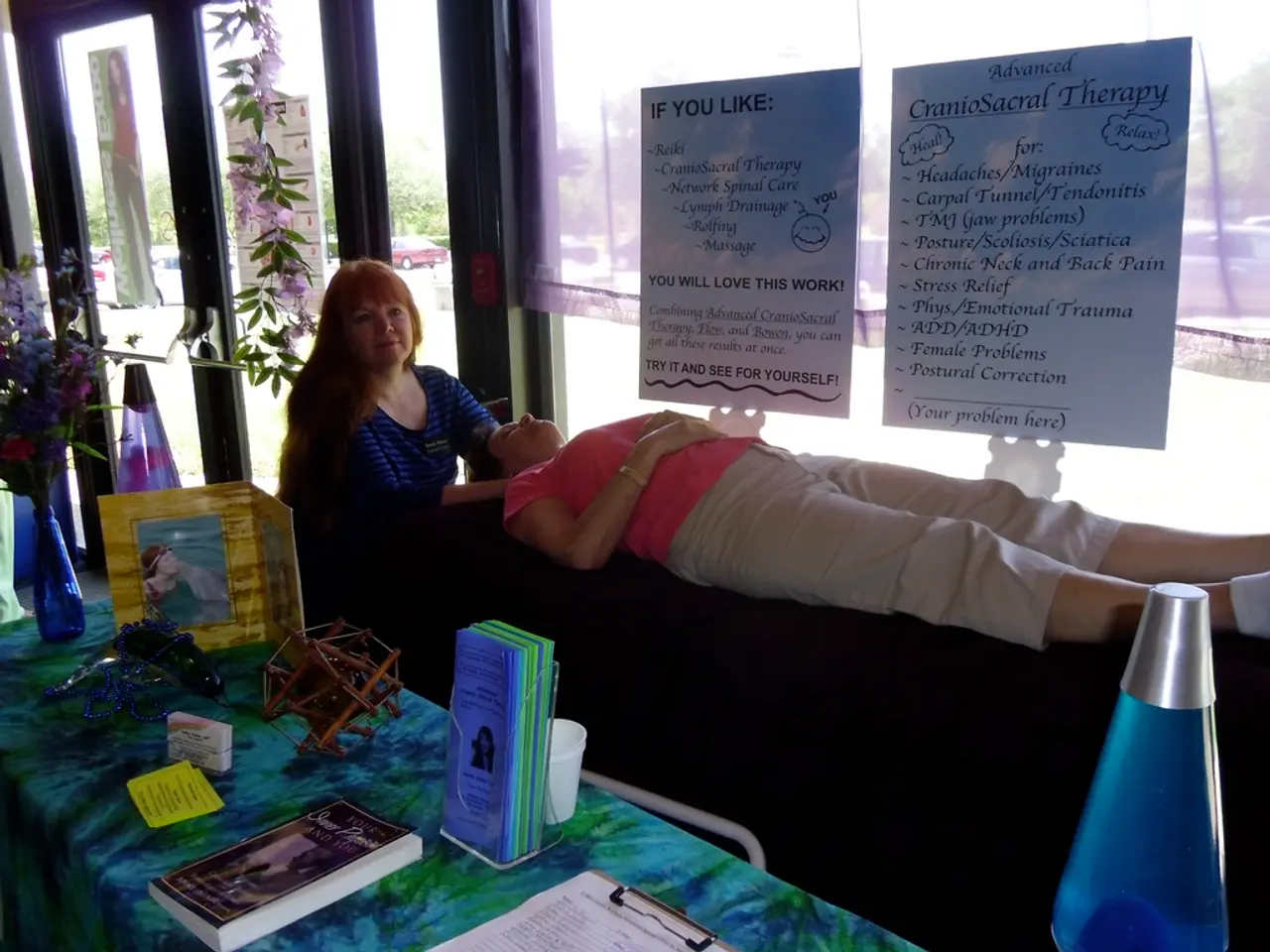Comparing Art Therapy and EMDR: Which Treatment Fits Your Needs Best?
In the realm of mental health, two innovative therapies have emerged as promising solutions for individuals grappling with trauma: Accelerated Resolution Therapy (ART) and Eye Movement Desensitization and Reprocessing (EMDR). Both techniques employ the use of eye movements to process traumatic memories, yet they differ significantly in their approaches and session structures.
Accelerated Resolution Therapy (ART), a relatively new psychotherapy technique developed in the early 2000s, is a structured and quick option that often produces results in just 1 to 5 sessions. ART combines rapid, guided eye movements with a unique process called imagery rescripting, where clients actively replace distressing images with positive ones to reduce emotional impact. This method emphasizes restructuring the memory with a "happy ending" rather than retelling the trauma in detail. Sessions typically focus on present physical sensations and use guided visualization techniques.
On the other hand, EMDR therapy, developed in the late 1980s, is a well-established and widely used form of psychotherapy. It is recognized for its efficacy in treating PTSD, with some research suggesting it can relieve symptoms more effectively than medication. EMDR therapy involves clients recalling distressing events in more detail as part of an eight-phase treatment protocol. The therapy uses bilateral eye movements to help desensitize and reprocess traumatic memories, focusing on reducing the severity of post-traumatic symptoms through controlled eye movements.
In comparison, ART minimizes the risk of re-traumatization or other adverse effects due to its structured and focused nature. It does not require clients to verbally re-experience trauma as extensively as EMDR does. EMDR, however, emphasizes cognitive restructuring, where negative or painful beliefs about oneself linked to trauma are reframed into positive thoughts.
Both therapies are evidence-based and effective for trauma and PTSD, but ART may offer faster symptom relief with less need to verbally re-experience trauma. EMDR, meanwhile, remains a more established and widely researched approach with a well-defined protocol. It is worth noting that ART can lead to a significant reduction in trauma-related symptoms of anxiety, depression, and intrusive thoughts, while EMDR helps alleviate distress associated with trauma.
In summary, ART and EMDR are two distinct yet effective trauma treatment methods. ART, with its emphasis on imagery rescripting and rapid eye movements, offers a structured and quick approach, while EMDR, with its eight-phase protocol, focuses on cognitive restructuring and bilateral stimulation. Both therapies hold great promise for individuals seeking relief from the debilitating effects of trauma.
[1] Parnell, J. (2018). Accelerated Resolution Therapy: A New Therapy for PTSD. Psychotherapy Networker, 42(5), 26-31. [2] Shapiro, F. (2018). Eye Movement Desensitization and Reprocessing (EMDR): Basic Principles, Protocols, and Procedures. Guilford Publications. [3] Lee, C. M., & Zoellner, L. A. (2014). Eye Movement Desensitization and Reprocessing for PTSD: A Review of Three Decades of Research. Psychological Medicine, 44(7), 1441-1459. [4] Bryant, R. A., Moulds, M., & Nixon, R. (2010). Eye Movement Desensitization and Reprocessing (EMDR) for the Treatment of Post-Traumatic Stress Disorder: A Systematic Review and Meta-Analysis. Clinical Psychology Review, 30(7), 862-879. [5] Cahill, J. (2018). Accelerated Resolution Therapy: A New Approach to Resolving Trauma. Psychotherapy Networker, 42(5), 32-35.
- The mental health field has seen the emergence of two innovative therapies, Accelerated Resolution Therapy (ART) and Eye Movement Desensitization and Reprocessing (EMDR), as potential solutions for individuals dealing with trauma.
- ART, developed in the early 2000s, offers a structured and quick approach, often providing results in just 1 to 5 sessions, by combining rapid eye movements with imagery rescripting and focusing on present physical sensations.
- Meanwhile, EMDR, established in the late 1980s, is a widely recognized therapy for PTSD treatment, with some research suggesting it may be more effective than medication. EMDR uses bilateral eye movements and an eight-phase treatment protocol, with clients recalling distressing events in more detail.
- Both ART and EMDR are evidence-based therapies and have shown effectiveness in reducing trauma-related symptoms such as anxiety, depression, and intrusive thoughts, contributing significantly to the health-and-wellness and mental-health sectors through their therapies-and-treatments.




